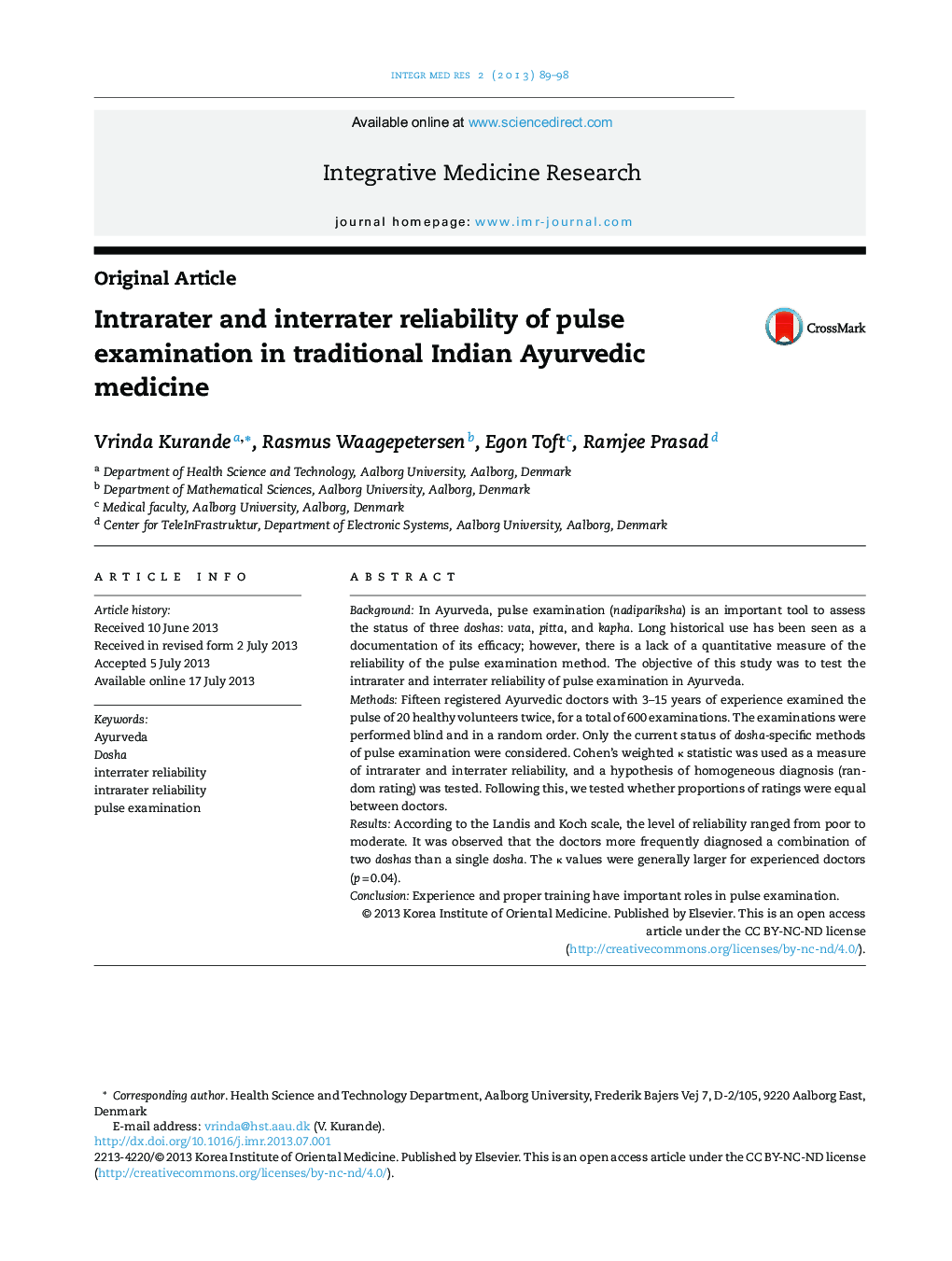| Article ID | Journal | Published Year | Pages | File Type |
|---|---|---|---|---|
| 3098303 | Integrative Medicine Research | 2013 | 10 Pages |
BackgroundIn Ayurveda, pulse examination (nadipariksha) is an important tool to assess the status of three doshas: vata, pitta, and kapha. Long historical use has been seen as a documentation of its efficacy; however, there is a lack of a quantitative measure of the reliability of the pulse examination method. The objective of this study was to test the intrarater and interrater reliability of pulse examination in Ayurveda.MethodsFifteen registered Ayurvedic doctors with 3–15 years of experience examined the pulse of 20 healthy volunteers twice, for a total of 600 examinations. The examinations were performed blind and in a random order. Only the current status of dosha-specific methods of pulse examination were considered. Cohen's weighted κ statistic was used as a measure of intrarater and interrater reliability, and a hypothesis of homogeneous diagnosis (random rating) was tested. Following this, we tested whether proportions of ratings were equal between doctors.ResultsAccording to the Landis and Koch scale, the level of reliability ranged from poor to moderate. It was observed that the doctors more frequently diagnosed a combination of two doshas than a single dosha. The κ values were generally larger for experienced doctors (p = 0.04).ConclusionExperience and proper training have important roles in pulse examination.
